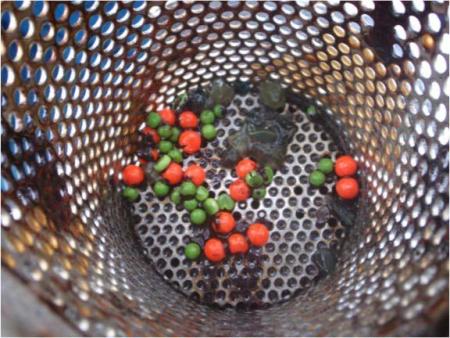Dec 3 2012
What was once believed to be impossible became a reality on November 16th: micro sensor motes were successfully sent into a Canadian heavy oil reservoir through an injection well and retrieved via a production well.
 Sensor motes from 5 to 7 mm that came out of the oil reservoir
Sensor motes from 5 to 7 mm that came out of the oil reservoir
This exciting result is from a field trial conducted by the PI Innovation Centre – a joint venture of the Canadian Petroleum Technology Research Centre (PTRC) and its Dutch-based partner INCAS3 – in collaboration with Canadian Natural Resources Limited (CNRL), which provided field access. The successful experiment is the first step towards mapping the structure of heavy oil reservoirs with micro sensor technology.
Heavy oil recovery challenges
Using existing recovery methods such as CHOPS (Cold Heavy Oil Production with Sand), heavy oil reservoirs in the Saskatchewan-Alberta border region of Canada see only a five-to-eight percent recovery rate. In CHOPS production, a sand and oil mixture is extracted from the heavy oil field; the produced sand that comes up with the oil leads to the creation of empty spaces or ‘wormholes’ in the reservoir. These ‘wormholes’ form a potentially immense network of channels in unconsolidated sandstone preventing pressurization of the reservoir and, thus, influencing the efficiency of oil production. If the Canadian oil industry can better characterize these reservoirs, extraction methods can be improved, which could lead to a substantial increase in yields up to 20% while lessening deleterious effects on both the environment and extraction efficiencies such as excess water production.
The challenge is to better understand the structure of these reservoirs. If this network of wormholes exists, sensors should provide information about details as to their number, diameter, direction and location. For this purpose INCAS3 is developing sensor motes that can be injected into heavy oil reservoirs, collect relevant data, and return to the surface. The main issues to overcome are the size of the sensors, the extreme conditions they face, communication with the sensors from the surface, and retrieving the sensors out of the reservoir.
Unprecedented success in first field test
November 12th to 16th saw the first proof of principle. The initial results indicate that between 10% and 20% of the injected sensor motes – those with a diameter of 7 mm or less – successfully passed through the reservoir. John van Pol, Managing Director of INCAS3, is positive about the results.
“The fact that the sensor motes traveled through the reservoir is a promising start for this innovative research,” he noted.
Dr. Malcolm Wilson, CEO of the PTRC, commented on the importance of this first field success to the future of heavy oil recovery.
“With the kinds of recovery rates we experience in CHOPS production,” said Wilson, “to actually be able to see and better understand these wormholes will enable us to develop improved recovery techniques.”
The next step is to closely analyze the obtained results. The PI Innovation Centre, a not-for-profit company founded by the PTRC and INCAS3 to develop and deploy micro sensor technology to the oil industry, will set up a research program to move to the next phase of trials, namely establishing good communication between the sensors and surface.